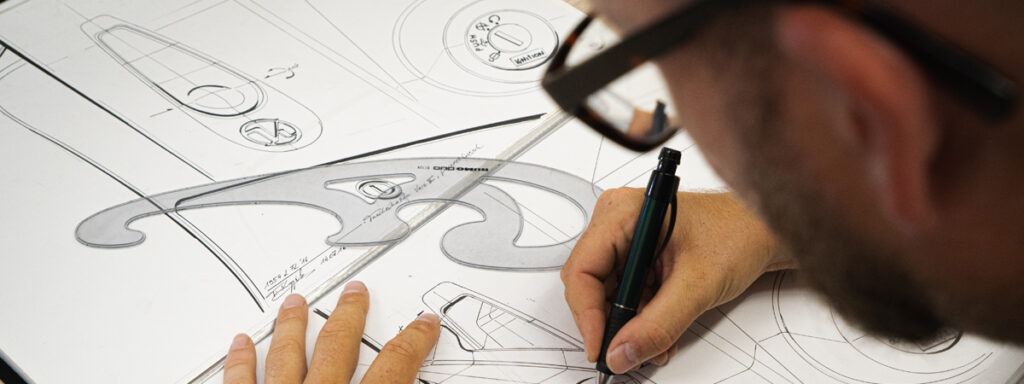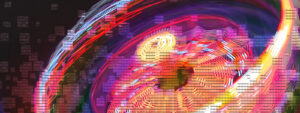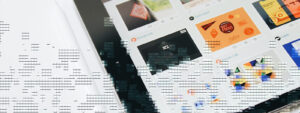Today on Brush & Bytes, we explore the fascinating realm of product design.
We will discuss the various stages involved in transforming a mere concept into a tangible, market-ready product.
Nowadays, product design doesn’t just pertain to physical consumer products. Product design has almost become synonymous with UX design which can be implemented to design websites, applications, and other digital products.
But that comparison is a discussion for another day.
Whether you’re an aspiring designer, a developer, or an entrepreneur looking to bring your vision to life, this guide will provide you with valuable insights and practical tips to navigate the importance of product design.
Table of Contents
- Why is Product Design Important?
- The Design Thinking Approach
- Defining the Design Brief
- Conducting Market Research
- Ideation and Concept Generation
- Find Your Unique Design Voice
- Sketching and Rendering
- CAD Modeling
- Prototyping and Testing
- Refining and Iterating
- Manufacturing and Production
- Packaging and Branding
- Bringing Your Product to Market
- Conclusion
Why is Product Design Important?

Product design plays a pivotal role in today’s competitive marketplace. A well-designed product not only enhances user experience but also differentiates itself from competitors, leading to increased sales and customer loyalty.
Product design bridges the gap between functionality and aesthetics, creating products that are not only visually appealing but also intuitive to use.
By considering the needs and desires of the end users throughout the design process, designers can create solutions that truly resonate with the target audience.
The Design Thinking Approach
At the heart of successful product design lies the design thinking approach. Design thinking is a human-centered problem-solving methodology that emphasizes empathy, collaboration, and iterative prototyping.
It encourages designers to deeply understand the user’s perspective, identify their pain points, and develop innovative solutions that address their needs.
This iterative process involves several stages, including empathizing, defining, ideating, prototyping, and testing, which we will explore in the following sections.
Defining the Design Brief
Before embarking on the design journey, it is crucial to define a clear design brief. The design brief outlines the project’s objectives, target audience, constraints, and desired outcomes.
A detailed design brief serves as a roadmap, guiding the design process and ensuring that the result aligns with the client’s vision and expectations.
By clarifying the project scope, budget, and timeline, the design brief sets the foundation for a successful design project.
Conducting Market Research
To create a product that meets the market demand, it is essential to conduct thorough market research. This involves analyzing current trends, identifying competitors, and understanding consumer preferences.
By gaining insights into the target market, designers can identify opportunities and gaps, allowing them to develop unique and innovative product ideas that fulfill unmet needs.
Market research also helps designers determine the viability and profitability of their concepts.
Ideation and Concept Generation
With a clear understanding of the target audience and market landscape, it’s time to unleash the creative potential. Ideation and concept generation involve brainstorming and generating a multitude of ideas.
By embracing a divergent thinking approach, designers explore various possibilities, pushing the boundaries of innovation.
These ideas can be visualized through sketches, mind maps, or mood boards, capturing the essence of the envisioned product.
Find Your Unique Design Voice
In a sea of talented product designers, it’s crucial to embrace your quirks and find your unique design voice.
What sets you apart from the rest? Perhaps it’s your love for bold colors, intricate patterns, or unconventional materials.
Celebrate your quirks and let them shine through in your designs.
Your individuality will captivate clients and employers, leaving them spellbound by your creative prowess.
Sketching and Rendering
Sketching is a fundamental tool for product designers. It allows them to translate abstract ideas into tangible visual representations.
Through sketches, designers can refine their concepts, exploring different shapes, proportions, and functionalities.
Additionally, digital rendering tools enable designers to create realistic and visually appealing representations of their product designs.
These visualizations serve as a bridge between the initial concept and the subsequent stages of the design process.
CAD Modeling
Computer-Aided Design (CAD) modeling revolutionized the field of product design, enabling designers to create precise 3D models of their concepts.
CAD software provides a virtual workspace where designers can refine their designs, test different iterations, and evaluate their functionality.
Product design software like Autodesk and Blender are great options depending on the type of product design you are working on, so choose accordingly.
With the ability to view the product from different angles and simulate its performance, designers can make informed decisions and iterate rapidly.
Prototyping and Testing
Prototyping is a critical stage in the product design process, allowing designers to bring their ideas to life in a tangible form. Prototypes can range from low-fidelity models made of basic materials to high-fidelity prototypes that closely resemble the final product.
Through prototyping, designers can assess the ergonomics, functionality, and aesthetics of their designs, gathering valuable feedback from potential users.
Iterative testing and refinement of prototypes help identify and resolve design flaws, ensuring a user-centric result.
Refining and Iterating
Based on the insights gained from prototyping and testing, designers refine their designs and iterate on their concepts.
This stage involves analyzing user feedback, making necessary adjustments, and optimizing the product for improved performance and user satisfaction.
By embracing a continuous improvement mindset, designers ensure that their products evolve to meet the changing needs and expectations of the market.
Manufacturing and Production
Once the design has been refined and finalized, it’s time to transition from the virtual realm to the physical world. Collaborating with manufacturers, product designers determine the most suitable production methods, materials, and assembly processes.
Effective communication between designers and manufacturers is crucial to ensure that the final product is manufactured to meet the desired specifications and quality standards.
This stage requires meticulous attention to detail and a comprehensive understanding of manufacturing processes.
Packaging and Branding
Packaging design is an integral part of the overall product experience. It not only protects the product but also communicates its value proposition and enhances its appeal on the store shelf.
Effective packaging design aligns with the brand identity, using visual elements, colors, and typography to create a cohesive and memorable brand experience.
By considering the entire customer journey, designers can create packaging solutions that resonate with the target audience and reinforce brand loyalty.
If you haven’t already, check out the article on, “The Power of Personal Branding: Building Your Professional Identity” for some insight on branding strategies.
Bringing Your Product to Market
With the final product design, manufacturing, and packaging in place, it’s time to bring the product to market. This stage involves developing a marketing strategy, defining pricing strategies, and implementing distribution channels.
By leveraging digital platforms, social media, and traditional marketing techniques, designers can create awareness and generate interest in their products.
For more information on social media marketing, check out, ”Social Media Marketing 101: Building Your Brand’s Presence.”
Building strong relationships with retailers and establishing a strong brand presence are key to successful product launches and market penetration.
Conclusion
Product design is a captivating blend of creativity, innovation, and problem-solving. From the initial spark of an idea to the final market-ready product, each stage of the design process requires careful consideration, collaboration, and a deep understanding of user needs.
By embracing the design thinking approach, conducting market research, refining concepts through prototyping and testing, and navigating the manufacturing and marketing landscape, designers can bring their visions to life and create products that make a lasting impact.
In the ever-evolving world of product design, staying curious, adaptable, and open to new ideas is essential.
So, embark on your design journey with enthusiasm, embrace the challenges, and let your creativity flourish as you transform your concepts into tangible creations that shape the future.



